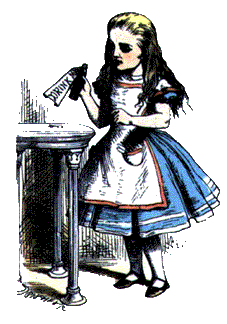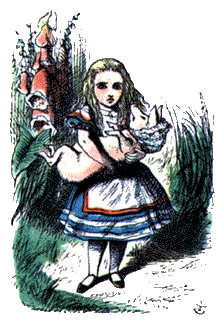

|
| "Play,
like love, happiness, and other psychological constructs, is easier
to recognize than to define". Charles Schaefer |
|
The
Therapeutic Powers of Play |
|
We are pleased and honored to offer a compelling course by Charles E. Schaefer (Editor), a renowned play therapist, and child and adult therapist. The
Therapeutic Powers of Play Please join us in this 9 unit course. |
| This course consists of a post-test based upon reading the text. The online portions include a Forum for discussion and the post-test. There is no online material to read. After you pass the post-test, you may print out your own certificate. |

"Play
gives children a chance to practice what they are learning....They have
to play with what they know to be true in order to find out more, and
then they can use what they learn in new forms of play." Mister
Rogers |
Book Description
Understanding How Play Therapy Works Its Magic
Although play therapy is a well-established and popular mode of treatment
for children, the fundamental question of how it works has seldom been raised
or addressed. For example:
* Is it the ability of the child and therapist to communicate better with
each other through play interactions than in words?
*Is it the miniaturization of experiences in play that leads to mastery of
stresses and traumas?
*Is it the motoric release of feelings in play actions?
* Is it the special relationship and rapport that develops with the therapist
in the play room?
This book addresses these questions by presenting a comprehensive account
of how play therapy works, and by specifically highlighting those elements
of the play process likely to be responsible for its most beneficial effects.
The basic premise of this volume is that play is not just a medium for applying
other interventions such as positive reinforcement or reframing, but that
play itself has a number of therapeutic elements which produce behavior change.
A deeper understanding of the elements of change should lead to improvement
in play therapy effectiveness based on an integrative approach to the treatment.(courtesy:http://www.aronson.com)
|
"Play
permits the child to resolve in symbolic form unsolved problems of the
past and to cope directly or symbolically with present concerns. It
is also his most significant tool for preparing himself for the future
and its tasks." Bruno Bettelheim " |

This course meets the qualifications for 9 hours of continuing education
maintains responsibility for the program. |
www.psychceu.com

"You
can come and play now." Steven Spielberg |
| Learning Objectives In this 9 unit course:
|
|
Table
of Contents
What Is Play and Why Is It Therapeutic?
Charles E. Schaefer
* What Is Play?
* Developmental Stages
* Play and Normal Development
* Uses of Play Therapy
* Therapeutic Factors
* Play Therapy FactorsOvercoming Resistance
James N. Bow
* Dynamics Underlying Resistance to Therapy
* Developmental Perspective
* Therapeutic Techniques for Clinical Practice
* Clinical Case Illustrations:
* Overcoming Anger, Silence, and Aggression in Children
* Summary: Resolving Resistance by Structured Play ActivitiesSelf-Expressive
Communication
Garry L. Landreth
* Definition of Play
* Characteristics ofPlay
* Types of Play
* Significance of Play in Self-Expression
* Fostering a Sense of Control
* Children's Awareness Is Communicated through Play
* Symbolic Expression in Play
* Therapeutic Expression in Play
* Therapeutic Value of Play
* How to Read Play Symbols
* Toys for Facilitating Self-Expression
* Case Illustrations: What Play RevealsPlay and the Growth of Competence
JoAnn L. Cook and Mary Sinker
* Competence through Developmental Play
* Mediated Play
* Mediated Play and Children with Disabilities
* Mediated Play as Psychotherapy
* Competence through Playful Work: The Concept of "Flow"
* Conclusion:Developmental Play Results in
Competence and Mediation Enhances Outcome5. Creative Problem Solving
Janet K. Sawyers and Diane M. Horm-Wingerd
* Play, Problem Solving, and Creativity
* Individual Differences in Play Styles
* Conclusion: Symbolic Play Facilitates Children's Creative Problem SolvingCatharsis
Barry G. Ginsberg
* Theoretical Issues
* Permissiveness Acceptance
* Limits
* Developmental Perspective
* The Client-Centered Play Therapy Approach to Catharsis and Emotional Release
* Case Illustrations: Acting Out and Abused Children
* Catharsis Is Vital7. Abreaction
Evelyn K. Oremland
* Developmental Perspectives
* Play in Pediatric Care
* Pediatric Play Histories
* Links Between Abreactive-Enactment and Development-Supportive Play
* Multiple Play Partners: Complications for Abreaction
* Facets of the Play Relationship8. Role Play
Eleanor C. Irwin and Nancy E. Curry
* Historical Foundations
* Object Relations Theory
* Role Play in the Autistic, Symbiotic, and Separation-
* Individuation Subphase
* Role Play as a Tool for Developing Empathy
* Role Play as a Tool for Learning New Skills9. Fantasy and Visualization
Dorothy G. Singer
* Definitions of ImageryTypes of Imagery
* Developmental Differences in Imagery
* Measurement of Images and Fantasy Production
* Applications of Imagery Techniques in Psychotherapy with Children
* Case Illustrations: Adjusting to Divorce and Overcoming Phobia
* Applications of Imagery Techniques in Educational
Settings
* Looking to the Future10. Learning by Metaphor
Diane E. Frey
* Anecdotes, Proverbs, and Parables
* Use of Art Forms in Play Therapy
* Universal and Prescriptive Metaphors
* Advantages of Metaphor Use for Children
* Developmental Issues and Metaphor Use
* Theoretical Aspects of Metaphors
* Clinical Uses of Metaphors
* The Processing of Metaphors
* Delivering Metaphors that Are Stories or Anecdotes
* Pitfalls in the Use of Metaphors
* Specific Clinical Applications
* Materials for Metaphor Use in Play Therapy
* Case Illustration: Childhood Grief Reaction11. Attachment Formation
Ann M. Jernberg
* Assessing Parent–Infant Interaction
* The Infant's Self-Image
* Compensation
* Theraplay
* Case Illustration: Successful Theraplay
* Other Child Therapy Procedures
* Play Is Necessary12. Relationship Enhancement
Louise F. Guerney
* Theoretical and Empirical Considerations
* Relationship Approaches in Play Therapy
* The Efficacy of Play Therapy for Improving
* Relationships
* Case Illustration of a Peer-Rejected Child
* Relationships: The Ripple Effect13. Play and Positive Emotion
Allyson I. Aborn
* The Origin of Positive Emotions in Play
* Functional Pleasures of Play
* An Examination of Positive Emotions
* Play and Cognition
* Case Illustration: A Boy Unable to Have Fun14. Mastery of Childhood Fears
D'Arcy Lyness
* Normal Childhood Fears and Expression through Play
* Features of Play that Promote Mastery of Fears
* When Fears Are Excessive
* Play Therapy for Excessive Fear
* What Play Reveals15. Game Play
Steven Reid
* Historical and Theoretical Foundations
* Developmental Perspective
* Therapeutic Ingredients of Games
* Types of Games
* Clinical Applications
* Case Illustration: An Encopretic Boy
* The Spectrum of Games
"Play
is the exultation of the possible." -Martin Buber |

"The
creative activity of the imagination frees man from his bondage to the
'nothing but' and liberates in him the spirit of play." C.G. Jung |
|
CHARLES E. SCHAEFER, PhD, is considered by many to be the "Father of Play Therapy". He is Professor of Psychology at Fairleigh Dickinson University in Teaneck, New Jersey. An expert in the field of play therapy, he is the cofounder of the Association for Play Therapy and the founder and co-director of the Play Therapy Training Institute in New Jersey. Dr. Schaefer was presented with the Distinguished Service Award-International Association for Play Therapy in 1996, and the Distinguished Faculty Award For Research & Scholarship, Fairleigh Dickinson University in 1994. The
Therapeutic Powers of Play
joins Dr. Schaefer's legendary list of publications on child therapy
and play therapy, and include such classics as:
|
Alice's Adventures in Wonderland illustrations by Sir John Tenniel
![]()
888-777-3773
We do adhere to the American Psychological Association's Ethical Principles of Psychologists. Our courses are carefully screened by the Planning Committee to adhere to APA standards. We also require authors who compose Internet courses specifically for us follow APA ethical standards. Many of our courses contain case material, and may use the methods of qualitative research and analysis, in-depth interviews and ethnographic studies. The psychotherapeutic techniques depicted may include play therapy, sandplay therapy, dream analysis, drawing analysis, client and therapist self-report, etc. The materials presented may be considered non-traditional and may be controversial, and may not have widespread endorsement within the profession. www.psychceu.com maintains responsibility for the program and its content. |
|
©
2000 - 2010 www.psychceu.com
all rights reserved. |
 |